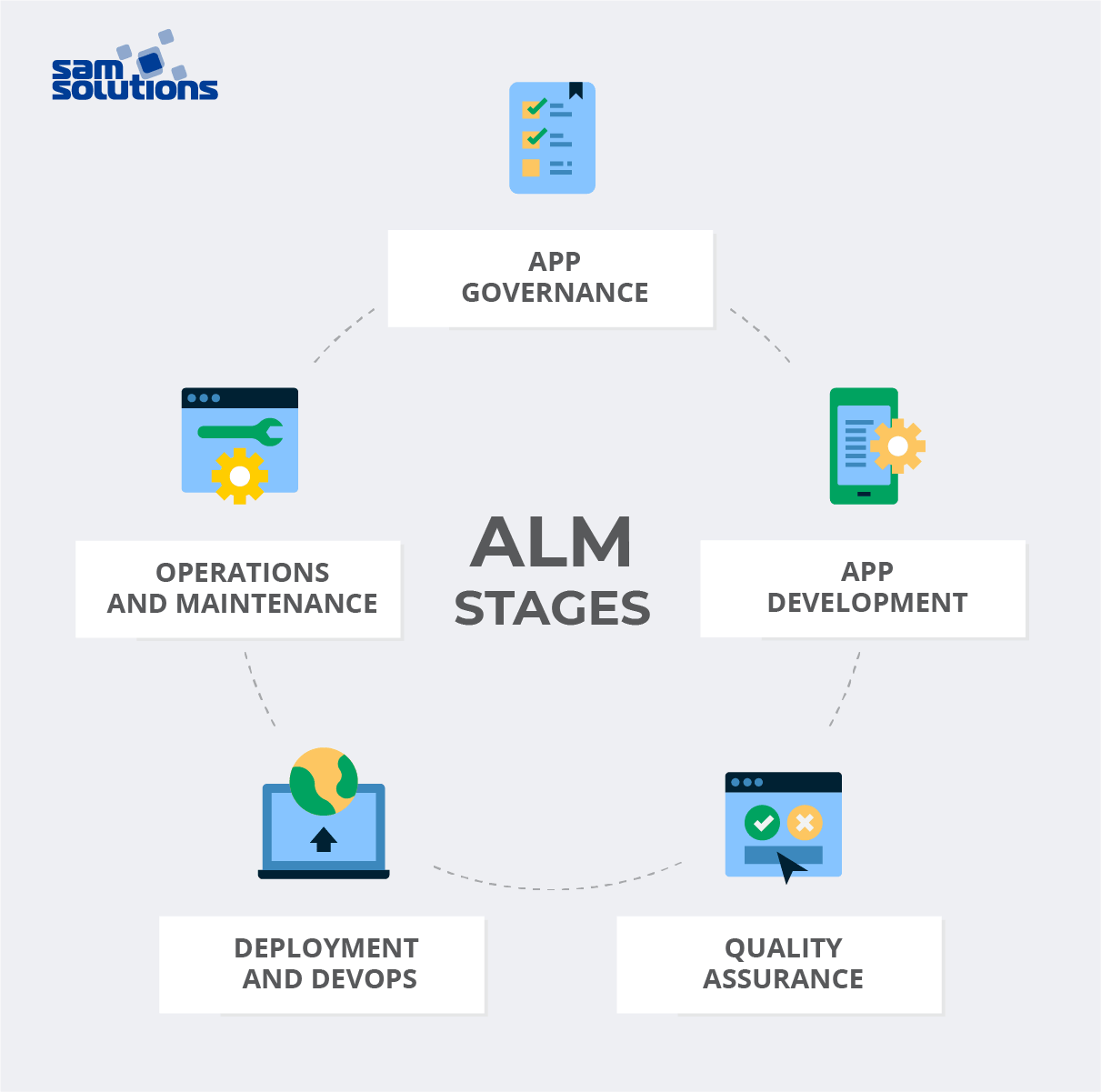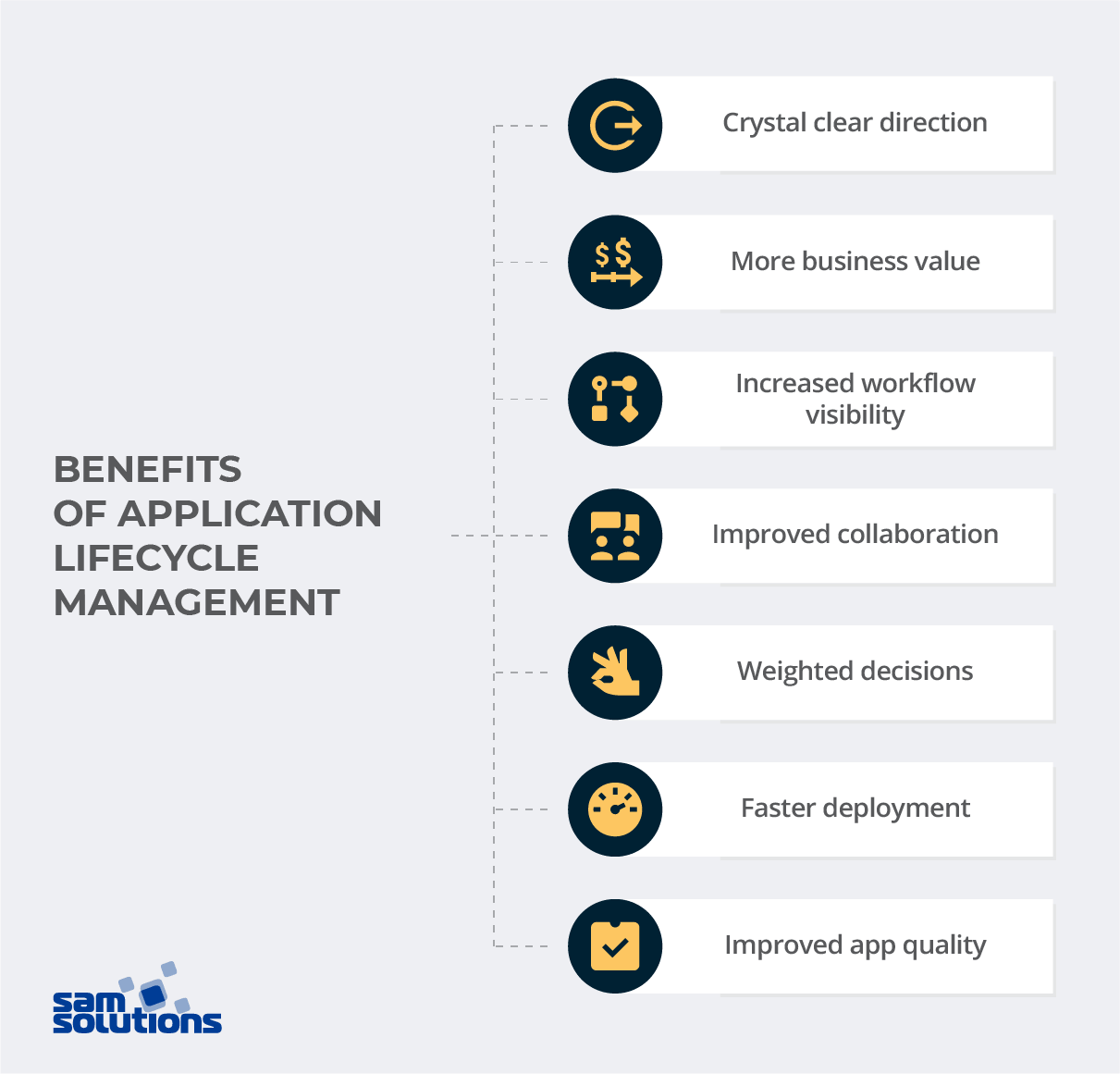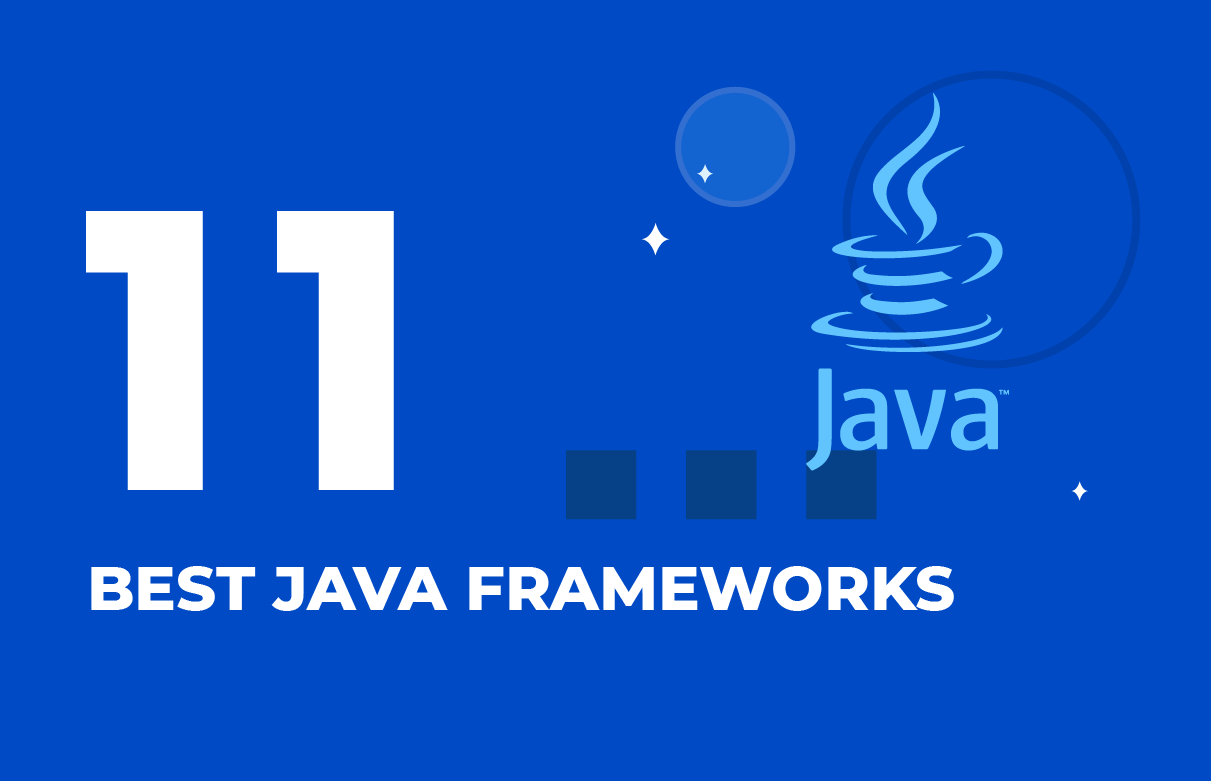Time is money, and IT companies strive to ensure frequent deployment that may happen every day, or even more often. Top-notch ALM tools can help guarantee this level of efficiency with comprehensive techniques throughout the application lifecycle.
Companies can implement ALM as soon as they receive an order from their customers to gather business requirements, write a plan and deliver software of superlative quality that perfectly satisfies the business demand. Let’s learn more about ALM and its advantages for software development.
What Is Application Lifecycle Management (ALM)?
Application lifecycle management is a complex system involving interested parties, recurrent procedures and instruments regulating the entire life cycle of the program, starting from concept emergence to the final retirement of the system.
With lifecycle management, companies execute established methodology of cooperation for the purpose of higher productivity. The integrated tools are more productive than just a number of detached instruments distributed among different teams.
It unites numerous procedures which initially were thought to be independent: management of projects and releases, requirements management, architecture, programming, change management, QA, services. ALM improves communication of different teams that work together, and their connection with stakeholders, thereby increasing end-product quality.
Develop your custom software with SaM Solutions’ engineers, skilled in the latest tech and well-versed in multiple industries.
ALM Stages

Application Governance
The first stage of ALM is governance. As an ongoing process, it will continue throughout the entire project life cycle. Application governance is primarily the gathering and analysis of customer requirements.
Other components are management of resources, protection of information, and access limitation. Automated processes help to ensure repeated deployments and quicker release.
Application Development
Application development comprises several processes, when the specialists decide on the software architecture, split the tasks among the programmers, create a plan, and build the application.
Agile teams can develop and deploy more than one time daily. To comply with business requirements, close cooperation with other teams like business development and marketing can fit into this stage as well.
This stage comprises the realization of the project plan when engineers implement the app and its architecture. Preparing the environment, development per se, and creating documentation are important parts of the process. Consequently, the fruits of this labor are the consistent documents and manuals on how to install, administrate and operate the software.
Leverage SaM Solutions’ decades-long expertise in IT to develop high-quality custom software for your business.
Quality Assurance
After the app has been created, the team carries out manual and automated tests to discover and solve bugs before the app release. Concerning Agile and DevOps, tests can be performed along with development. Test outcomes are then used for quality improvement. Continuous integration plays an important part in preventing conflicts that may arise because of these adjustments. The ultimate goal of the quality assurance stage is to provide a smooth bug-free performance.
One should not underestimate the meaning of QA in creating a high-quality application. This process saves both time and money for the business in the long run. It helps ensure reliability, security and trouble-free performance of the system, which leads to better user experience and results in increased customer satisfaction.
Deployment and DevOps
Deployment happens when the application is released to the customers. This can happen in different ways, depending on the kind of application that’s being released.
DevOps is the combination of practices carried out by software development (Dev) and IT operations (Ops) teams. Before the amalgamation of DevOps, developers would need assistance from the operations team in providing various environments and performing tests in them.
Development processes are much faster today, making it impossible to develop and execute tests separately. DevOps methods help combine these efforts and test recent changes in environments ready for production.
Operations and Maintenance
ALM refers to the life of an application even after the deployment stage. Constant improvements of the system are the result of continuous support and maintenance services provided to clients when all emerging issues are solved on time.
This is an important step in the life of software, which can include releasing, configuration and monitoring subsets. During this period, engineers improve the system if there are any errors and malfunctions identified.
This process facilitates correct planning and prioritization of upcoming upgrades of the system, which often leads to the appearance of new or improved features, increased productivity, smooth and stable performance of the program without any disruption in its functioning.
ALM vs. SDLC
ALM is a broader term and may include a few SDLC (software development life cycles). It covers service and support processes, and improvement continues during all product lifetime. It concentrates both on the development phase and on its performance after the product delivery. Application lifecycle management terminates only after the system is no longer used.
SDLC deals only with the processes that happen before the application is deployed. The first step is identifying the requirements for the software when all the interested parties participate in setting goals that are primary for the project. Then, the planning takes place, and the team specifies expenses and necessary instruments, as well as speculates on the potential threats and how to eliminate them.
The next step is creating the design plan. It is important that all the stakeholders should discuss it and share their opinions on how to possibly improve it. After that, building happens, and each software engineer follows the pre-set guidelines for it. Afterwards, the system undergoes tests and, finally, is deployed.
Application Lifecycle Management Tools
Companies use these instruments for project management to assist communication in real time, collaboration, planning, coding, QA and deployment control. The tools help outline business requirements and create user stories to better understand customer needs, provide reports on the effective use of resources, and track issues and improvements.
Examples of ALM tools:
- IBM’s Rational
- Microsoft Azure DevOps Server
- Tuleap
- Basecamp
- HP ALM
- Microsoft’s ALM suite
- CA Agile Central
- VersionOne
- Atlassian
- CollabNet
Before you decide which tool to select, compare the technical characteristics of each one. Depending on the type of project, you may require a number of ALM platforms or suites.
The most important characteristics of ALM tools are:
- Defining requirements and creating user stories
- Creating tasks for resource tracking
- Creating, editing, and executing tests
- Bug recording
- Manual and automated testing management
- Deployment and DevOps
- Maintenance and support
- Version control
- Application portfolio management
Benefits of Application Lifecycle Management

Crystal Clear Direction
With application lifecycle management, you can get a comprehensive understanding of what needs to be done. It can help allocate your resources more effectively and create a detailed plan to deliver a robust cost-effective solution. With modern instruments for better supervising, managers and developers can establish continuous communication, during which the guidelines can be outlined and the team members will get a distinct plan.
More Business Value
ALM facilitates close cooperation among all the parties. As a result of ongoing communication throughout the application lifecycle, it is easier to achieve compliance with corporate goals and bring more value to your business.
Business owners can track the process, observe the decisions made, and any adjustments made to the system will come as no surprise to them. What is more, they can have a direct impact on decision-making almost immediately while the software is being under development.
Increased Workflow Visibility
Team members can view transparent processes and track workflow to improve product characteristics and team productivity. Each person can monitor the development process, share insights and ideas, express the unique opinion that can influence the software creation and make it more productive and result-oriented.
Improved Collaboration
With enhanced team collaboration, personnel can check the project status and recent updates. They can always track tasks, priorities, and project plan fulfillment even in remote mode, which takes productivity to the next level. Due to the lack of decent cooperation, a project realization can be disrupted, which leads to customer dissatisfaction and ultimately is not great for building a good repute for business.
Weighted Decisions
It is easier to make decisions due to the source control option and possibility of real time planning. When teams deal with aging software or handle several apps at the same time, it is especially useful. The tools help to provide a thorough analysis of all the ongoing processes and choose the best strategy for effective project realization.
Faster Deployment
ALM streamlines all the software development processes, which reduces the time needed for the application development and deployment. It will help you to triumph among your competitors on the market and attract new customers that are easily drawn to fast services with impeccable characteristics.
Improved Quality of Application
If you don’t use application lifecycle management tools, there is a constant risk of making costly mistakes due to the unaligned processes.



























 5 Reasons Why Your Business Needs a Mobile eCommerce Application
5 Reasons Why Your Business Needs a Mobile eCommerce Application Using Salesforce to Improve Your Sales Pipeline: Five Tips
Using Salesforce to Improve Your Sales Pipeline: Five Tips Cross-Platform Mobile Development: Five Best Frameworks
Cross-Platform Mobile Development: Five Best Frameworks How to Develop Custom Accounting Software
How to Develop Custom Accounting Software 10 Best Web Development Frameworks in 2024
10 Best Web Development Frameworks in 2024








![[Tech Talk] What Developers Should Know About SQL Optimization, Part 1: Fundamentals](https://www.sam-solutions.com/blog/wp-content/uploads/fly-images/30279/SQL-video-cover-370x238.webp)



 Top 30 Ecommerce Tools to Elevate Your Business in 2024
Top 30 Ecommerce Tools to Elevate Your Business in 2024 5 Best Tools to Improve Embedded Software Testing
5 Best Tools to Improve Embedded Software Testing Why React and Node.js Are the Top Technologies for Creating High-Performance Web Apps in 2024
Why React and Node.js Are the Top Technologies for Creating High-Performance Web Apps in 2024 10 Best IoT Platforms for 2024
10 Best IoT Platforms for 2024
I believe in the constant improvement of the programs I have developed. Even after the development is over. Thanks to ALM, it’s now possible to make adjustments and upgrade the system throughout its entire lifespan.
The best part of the application lifecycle management is that it can connect several teams and provide them with the same unified view. It improves collaboration greatly.
I remember the time when I had to cope with projects without ALM. It was hard. Today, it is much easier to prioritize tasks, create schedules and assign requirements.
As part of a development team, I truly enjoy all the advantages that application lifecycle management tools have introduced into my work. Most of all, I appreciate the transparency in all the ongoing processes and the possibility of remote access to information.
Good article. With ALM I find it easier to track issues and manage maintenance work. Previously it was difficult. Luckily, this is no longer an issue with ALM.
ALM is a great solution! I remember the time before these tools, when software development was really a hectic process. It was often disrupted by minor mistakes caused by a lack of collaboration between teams.
My company always uses application lifecycle management. It really helps in aligning all the processes. I especially adore the personalized dashboards where I can find all the necessary information I need for my work.